National Winter Canola Variety Trial (NWCVT) sites for the canola breeding program were harvested at Belleville, Colby (not yet reported), Garden City, Hutchinson, Manhattan, and Norwich. Each trial is split into open-pollinated (OP) and hybrid varieties. Yields in the OP and hybrid trials in Belleville averaged 79 and 91 bu/acre, respectively. For the first time in its history, the canola program harvested entries that yielded over 100 bu/acre at this site. The Garden City OP and hybrid trials averaged 43 and 47 bu/acre, respectively. The Hutchinson OP and hybrid trials averaged 60 and 67 bu/acre, respectively, and the Manhattan OP and hybrid trials each averaged 74 bu/acre, mostly because of timely spring rainfall and dense crop canopies. The Norwich site was the most drought stressed location and as a result the OP and hybrid yields were 42 and 45 bu/acre, respectively. Greater losses from the late April freeze were observed at this location as well.
NWCVT yields for Belleville and Manhattan (northern Kansas) are summarized for the OP and hybrid entries in Figures 1 and 2, respectively. Yields for Hutchinson and Norwich (south central Kansas) are summarized for the OP and hybrid entries in Figures 3 and 4, respectively. Yields for Garden City (southwest Kansas) are summarized for the OP and hybrid entries in Figures 5 and 6, respectively.
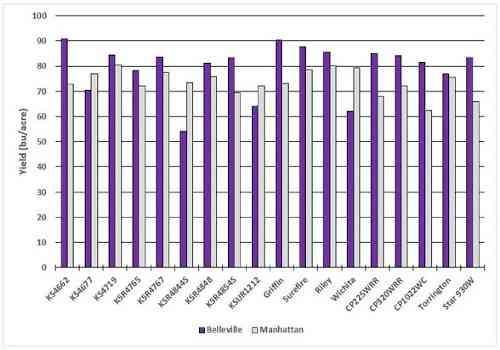
Figure 1. Yield results for northern Kansas (Belleville, Manhattan) OP variety trials. Belleville LSD (0.05) = 17 bu/acre; Manhattan LSD (0.2) = 7 bu/acre.
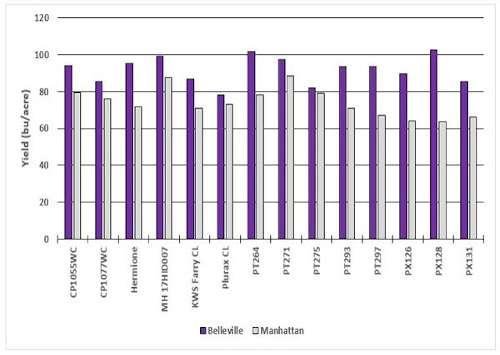
Figure 2. Yield results for northern Kansas (Belleville, Manhattan) hybrid variety trials. Belleville LSD (0.05) = 13 bu/acre; Manhattan LSD (0.05) = 9 bu/acre.
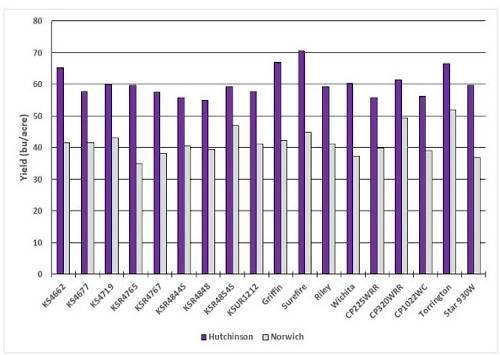
Figure 3. Yield results for south central Kansas (Hutchinson, Norwich) OP variety trials. Hutchinson = no significant difference; Norwich LSD (0.05) = 9 bu/acre.
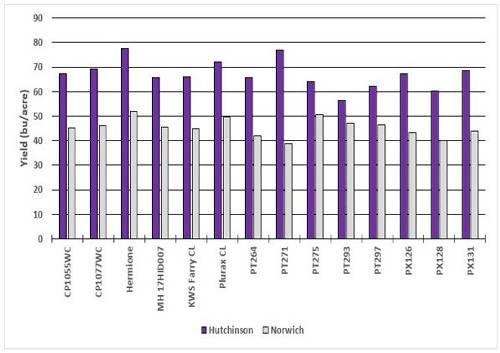
Figure 4. Yield results for south central Kansas (Hutchinson, Norwich) hybrid variety trials. Hutchinson LSD (0.3) = 7 bu/acre; Norwich = no significant difference.
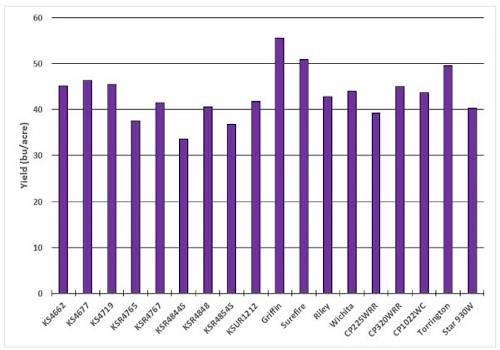
Figure 5. Yield results for southwest Kansas (Garden City) OP variety trials. Garden City LSD (0.05) = 8 bu/acre.
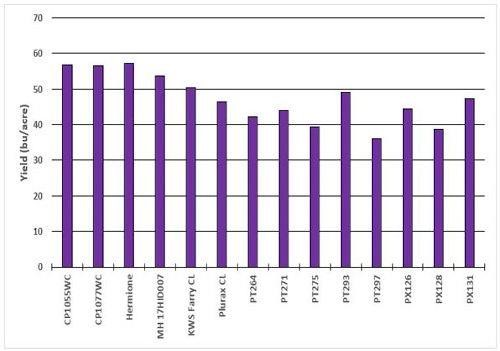
gure 6. Yield results for southwest Kansas (Garden City) hybrid variety trials. Garden City LSD (0.05) = 6 bu/acre.
Careful variety selection is very important for successful winter canola production. Watch future Agronomy eUpdates for additional trial site results and a discussion to help with variety selection.
Source : ksu.edu